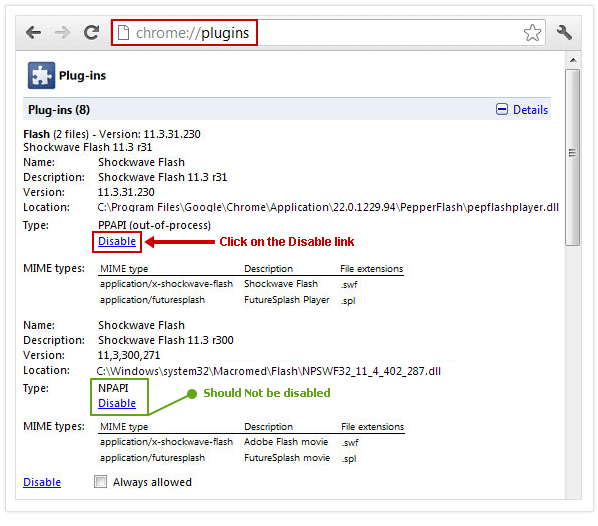Summary :
- Windows Media Player Plugin Chrome
- Chrome Media Player Download
- Application X Mplayer2 Plugin Edge
- Application X Mplayer2 Mac
- X Mplayer2 Windows 10
- NoPlugin is an extension for Chrome, Opera, and Firefox that allows you to play some plugin content in your browser without plugins. All browsers have phrased out the use of web plugins, due to performance and security problems, so NoPlugin was created to maintain some compatibility with outdated sites.
- Open Chrome and type “chrome://flags/#enable-npap” in the browser. Look for “Enable NPAPI” (search the page with ctrl+F) and simply press on Enable. Restart your Chrome browser and it should work. (Extra steps if the 3 steps didn’t work) 4. If It didn’t work then go to the plug-in link for chrome “chrome://plugins/”.
Application X Mplayer2 Plugin Download Chrome Download Girls Like You Mp3 Free hard disk space: 9 GB SYSTEM REQUIREMENTS: Over the years, the legendary Mortal Kombat series returns to what they remembered and thousands of players in the game Mortal Kombat.
When you open a website on Google Chrome, the “this plug-in is not supported” issue may appear. The content on the webpage fails to load but shows the error message instead. Now, you can read this post from MiniTool to find some methods to fix the error.
What does “this plug-in is not supported” mean? It means that the issue may be related to the Flash plugin in Google Chrome. It means there is a problem with the browser's Flash settings. Flash may be corrupted, or affected websites may be rejected from using Flash. Maybe you are interested in this post - How to Effectively Resolve Flash Not Working in Chrome.
In the following sections, we walk through the useful methods to fix the “this plug-in is not supported” issue.
Fix 1: Enable Flash in Google Chrome
The “plug-in not supported” error may be caused by that Chrome application is currently not enabling Flash. Thus, you need to enable it to fix the annoying issue. Follow the steps below:
Step 1: Click the Google Chrome icon on your taskbar to open it.
Step 2: Input the following text into the address box- chrome://settings/content. Then, press the Enter key.
Step 3: Scroll down and locate Flash to click it. Then, click the Allow sites to run Flash parameter.
Step 4: You can click the Ask first parameter. Then, you have enabled Flash in Google Chrome successfully.
Fix 2: Install the latest Flash player
You can also try to install the latest Flash player to fix the “this plug-in is not supported” issue. The steps are as follow:
Step 1: Open Google Chrome. Copy and paste the following address in the address bar: chrome://components/, and press Enter.

Step 2: You will access the new page which lists all the components installed in Chrome. Just find Adobe Flash Player and click Check for update. If any update is checked, you could get Flash updated.
If the plug-in problem persists even after updating Flash, or if Flash cannot be updated for some reason, you need to uninstall Flash and restart your computer, then install Flash again.
Fix 3: Clear the Browsing Data


Sometimes, the corrupted Chrome cache can cause the “this plug-in is not supported” issue. So, you can try clearing it to fix the problem. Here is a guideline below for you.
Windows Media Player Plugin Chrome
Step 1: In the Chrome page, press Ctrl + Shift + Delete keys at the same time to open the Clear browsing data window.
Step 2: Go to the Advanced tab and select All time from the drop-down menu.
Chrome Media Player Download
Step 3: Check the Browsing history, Download history, Cookies and other site data, and Cached images and files boxes.
Step 4: Click the Clear data button to apply this change.
Also see: Google Chrome Is Waiting for Cache – How to Fix
Fix 4: Update Google Chrome
If the issue still exists, you can try to update Google Chrome to fix the issue. Here is how to do that:
Step 1: Open Google Chrome. Click the three dots in the top-right corner to open the Settings menu.
Step 2: Go to Help > About Google Chrome. Then Chrome will scan to check if there is a new version available.
Step 3: If Chrome detects a new version, restart the browser to take effect.
If all of the fixes don’t work, you had better try another browser, such as Internet Explorer.
Final Words
To sum up, this post introduced 4 feasible methods to fix the “this plug-in is not supported” issue. If you encounter the same issue, you can refer to this post. Besides, if you have better methods to fix the error, you can share it in the comment zone.
-->To embed the Windows Media Player control in a webpage that can be displayed by a Firefox browser, create an OBJECT element or an EMBED element that has one of the following mime types as its type attribute:
- application/x-ms-wmp
- application/asx
- video/x-ms-asf-plugin
- application/x-mplayer2
- video/x-ms-asf
- video/x-ms-wm
- audio/x-ms-wma
- audio/x-ms-wax
- video/x-ms-wmv
- video/x-ms-wvx
The preferred mime type is application/x-ms-wmp.
The following examples show how to embed the Player control using an OBJECT element or an EMBED element.
Application X Mplayer2 Plugin Edge
The preceeding examples work in Firefox but not in Internet Explorer. To embed the Player control in a webpage that can be displayed by Internet Explorer, you must create an OBJECT element that has a classid attribute set to the class ID of the Windows Media Player control.
Application X Mplayer2 Mac
The following example shows how to embed the Windows Media Player control in a webpage that can be displayed correctly by both Internet Explorer and Firefox. Script on the page detects the browser type and generates the appropriate OBJECT tag.
X Mplayer2 Windows 10
Related topics
